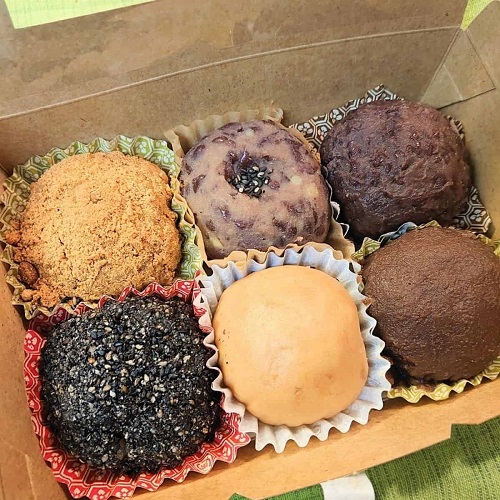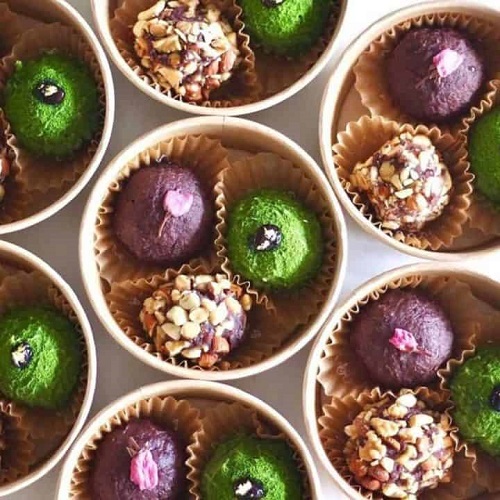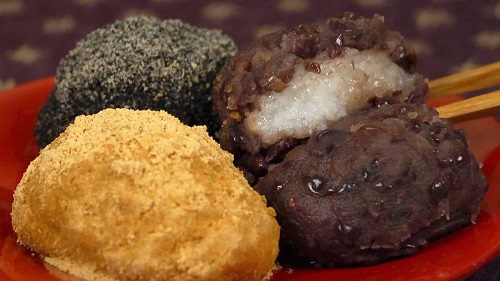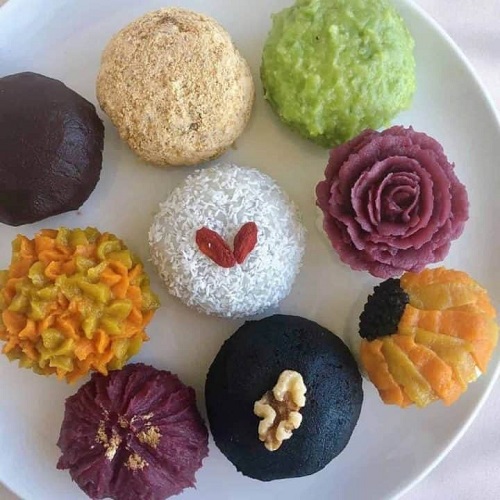Ohagi, a traditional Japanese sweet, is a delectable treat that encapsulates the perfect blend of chewy rice and sweet red bean paste. In this guide, we’ll delve into the art of crafting Ohagi, also known as Botamochi, exploring both its ingredients and the step-by-step process to create these delightful confections.
The Essence of Ohagi – Unveiling the Ingredients
At the heart of crafting the perfect Ohagi lies a carefully selected set of ingredients. To embark on this culinary journey, gather 1 cup of glutinous sweet rice, ¼ cup of regular short-grain rice, 1 ½ cups of water, 3 teaspoons of sugar, ½ teaspoon of salt, 1 lb of red bean paste (Anko), 2 tablespoons of soybean flour (Kinako), and 2 tablespoons of ground black sesame seeds.

Crafting the Perfect Coatings – Kinako and Sesame Magic
The magic of Ohagi doesn’t just stop at the rice and red bean paste. Elevate your sweet treat by creating two distinctive coatings – Kinako and black sesame. For the Kinako coating, combine soybean flour, sugar, and salt, creating a harmonious blend of flavors. Alternatively, for the black sesame coating, mix ground black sesame seeds and sugar, adding a delightful nutty crunch to your Ohagi.

A Symphony of Shapes – Molding Ohagi with Precision
The art of crafting Ohagi extends to the meticulous shaping of these delectable treats. Whether you’re opting for the classic Anko wagashi or the Kinako and sesame version, the process begins with cooking glutinous and regular rice together, partially pounding them, and shaping them into perfect spheres.

Wrapping Up the Sweet Symphony – Enrobing Ohagi in Anko
To truly experience the symphony of flavors, it’s essential to master the art of wrapping your rice balls in Anko. For the Anko wagashi version, spoon the red bean paste into your hand and envelop the rice ball, creating a luscious outer layer. For the Kinako and sesame Ohagi, adjust the size and coat the rice balls with the respective coatings, creating a tantalizing contrast of textures.

The final act in the Ohagi masterpiece involves presentation and serving. Whether you’ve opted for the classic Anko or ventured into the world of Kinako and sesame, arrange your Botamochi on a plate with care. The visual appeal of these handcrafted delights is as important as their exquisite taste. Serve with a sense of pride, savoring the culmination of your culinary artistry.


